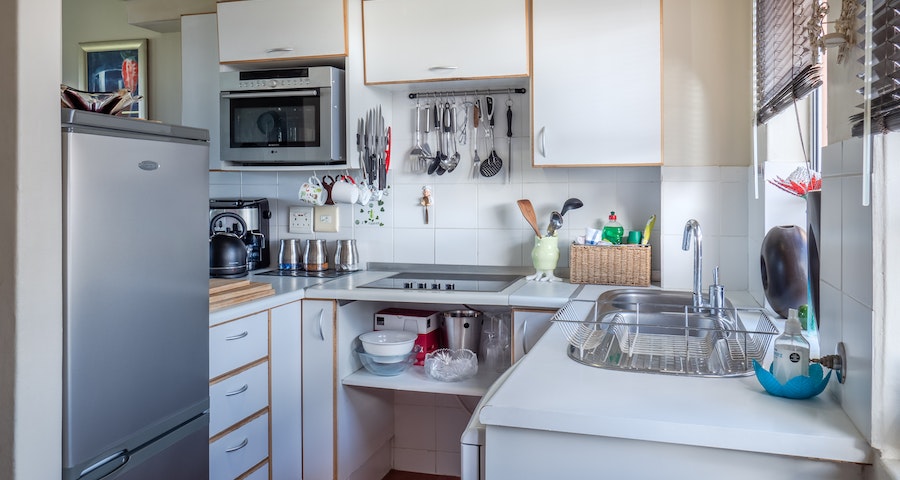
A well-designed kitchen is essential to having an efficient home. A small kitchen can also be functional and organized if you know how to identify your requirements. Space limitations can be frustrating, but usually, they can inspire some creative problem-solving ideas. Opting for a smart layout and appliances could support efficient space utilization and create a visually appealing ambiance. In this post, we will explore the things you must analyze when designing a small kitchen space.
Contents
Kitchen Layout and Storage options
The layout of the kitchen can have a significant impact on its functionality. Choosing the right layout can help optimize the available space in your kitchen. Some of the most popular kitchen layouts for small kitchens include the U-shaped layout, the L-shaped layout, and the galley style layout. Ensure that you have enough storage solutions in your kitchen and that they are utilized correctly. Installing shelf dividers, pull-out organizers, and drawer inserts can make a big difference in how much storage space you have.
Countertops and Appliances
Selecting the right kitchen appliances and countertops is a crucial part of creating an efficient kitchen. Counter space is significant, and it is essential to choose the right material that’s both durable and easy to maintain. As for appliances, consider installing compact and multifunctional appliances. Appliances, such as an under-counter refrigerator or drawer microwave, could save space and improve your kitchen’s functionality.
Lighting
Lighting plays a vital role in making a small kitchen feel more spacious and bright. Good lighting could also add to the ambiance of the kitchen. Installing ample artificial lighting is essential if the kitchen lacks natural lighting. Consider incorporating task lighting under cabinets or inside drawers to save countertop space. To make the kitchen look more spacious, choose light-colored, high-gloss or gloss finishes for cabinets and countertops.
Floor Materials
Small kitchens should be designed to look spacious. It is crucial to choose the right flooring materials that do not create visual clutter. Opt for lighter-colored, large-format tiles that could create a visually unbroken floor. Choose materials that are durable and easy to clean, such as porcelain tiles, natural stone, or linoleum.
Decor and Accessories
Decor and accessories can enhance the aesthetic of your kitchen space. Consider using simple decorative pieces or unique accessories to provide your kitchen with character without taking up too much space. Adding a subtle pop of color with plants or a vibrant backsplash could create a significant difference to the overall look of your kitchen.
Conclusion:
Designing a small kitchen can be intimidating, but it is possible to have an efficient and organized space if you identify your requirements. A well-designed small kitchen could work seamlessly and enhance your lifestyle. This guide outlines some essential things that you should analyze when designing a small kitchen. By considering these elements, you can create a perfectly optimized and visually appealing small kitchen.
